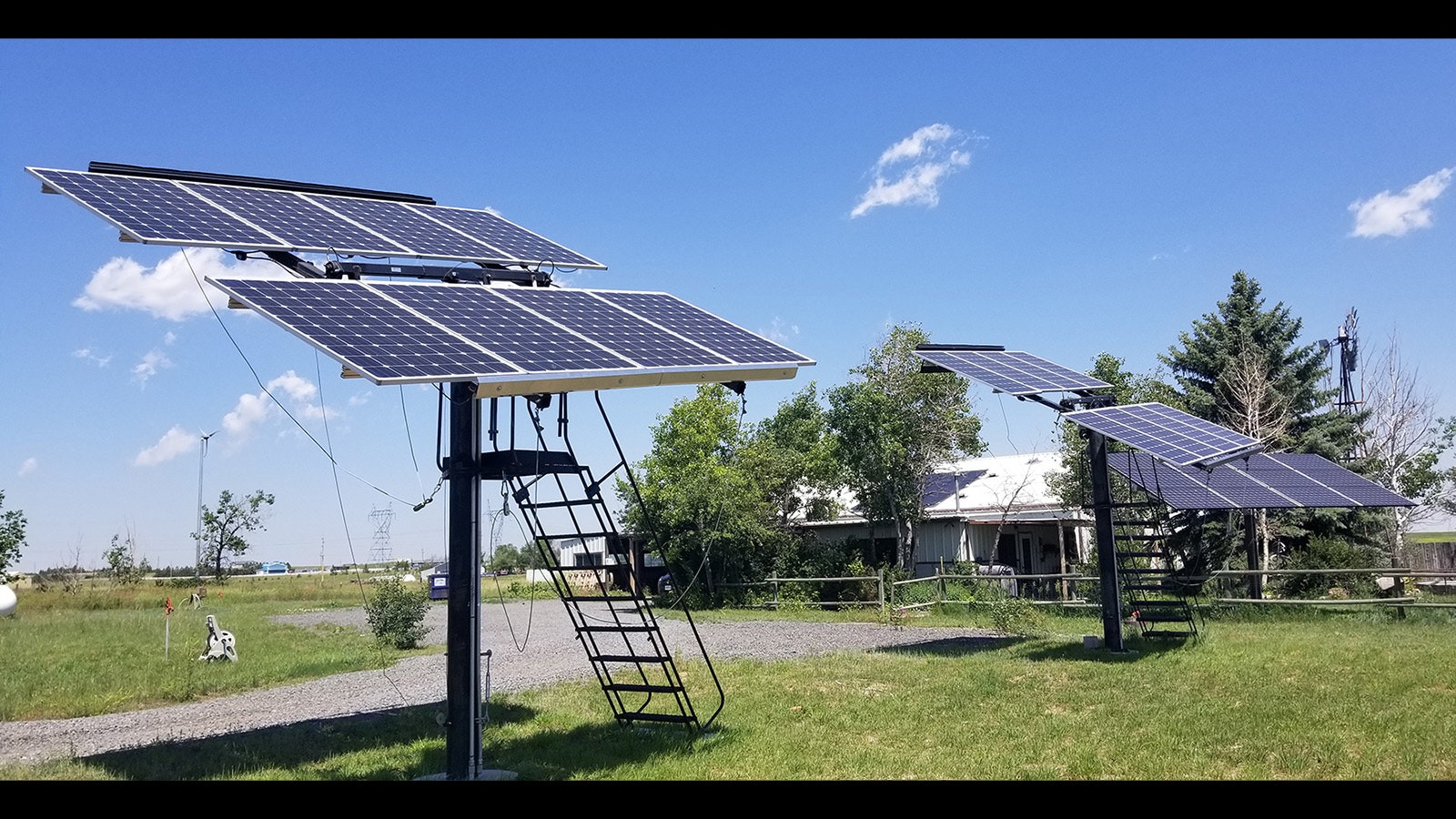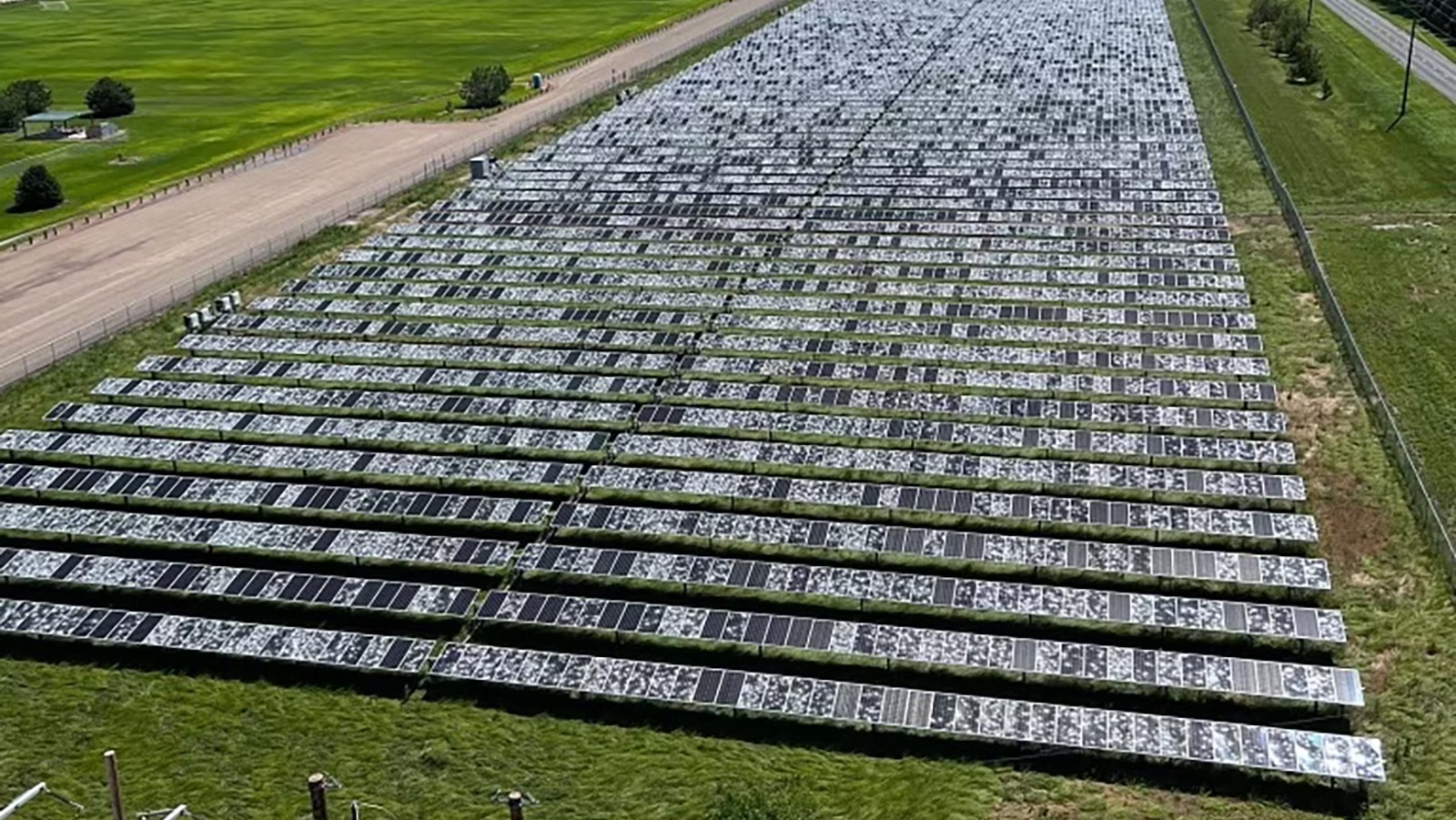Baseball-sized hail took out a solar farm in Scottsbluff, Nebraska, on Friday.
The hail shattered most of the panels on the 5.2-megawatt solar project, sparing an odd panel like missing teeth in a white smile.
Wyoming has only one commercial-scale solar farm, but a second project is under construction south of Cheyenne.
The Federal Emergency Management Agency ranks this area in its the highest category for hail risk on the national index.
Don Day, Cowboy State Daily meteorologist, said the hail would have reached terminal velocity during its descent, which is the maximum speed an object will reach when falling. The hail would have likely struck the panels going 100 to 150 mph.
Looks Destroyed
The entire region has experienced strong storms the past week, which included tornadoes, hail, heavy rains and wind.
A tornado destroyed at least one home in Scottsbluff. Much of the damage to the area was from high winds and hail, which brought down power lines, damaged trees and shattered windshields.
Kevin Spencer, Scottsbluff city manager, told Cowboy State Daily the Nebraska Public Power District, which owns the solar farm, is still assessing the damage, but it’s going to need some repairs.
“Just by looking at it, it looks destroyed to me,” Spencer said.
Spencer said there’s more to a solar farm than just the panels, and so some of the equipment at the farm might have survived the storm. He said he was previously told the panels were hail proof, but that might have meant hail up to a certain size.

Very Durable
Demi Gastouniotis, development manager for Qcells, the company developing the South Cheyenne Solar project, said at a May conference in Cheyenne that solar energy makes up 1% of the the Cowboy State’s total electricity production, even though the state is in the top 10 for solar potential in the U.S.
The South Cheyenne Solar project, Gastouniotis said, will double the state’s total solar capacity.
Cowboy State Daily reached out to Gastouniotis to ask about how the developers are managing the hail risk to the project and didn’t receive a response.
Jason Bloomberg, a Cheyenne physician and proponent of renewable energy, said the solar panels on his property have had plenty of hail impacts over the years, and they’ve been fine. Hail has damaged other parts of his property, he said, but not the panels.
The company that sold him the panels demonstrated their ability to resist hail damage by firing baseballs at it with a baseball cannon. They also drove a pickup over them.
“They’re very durable,” he said.
Bloomberg suspects that high winds drove large hailstones into the Scottsbluff panels, which exceeded their hail resistance limits.
Ground Zero
Day said that the region around southeast Wyoming has some of the highest frequencies of hailstorms in the country.
“It’s ground zero,” Day said.
The average is seven to nine hailstorms per year. That includes everything from pea-sized to baseball-sized hail.
“Scottsbluff last Friday night was just absolutely pummeled,” Day said.
Day said that the storms are covering a sparsely populated area with little development, so they don’t always cause a lot of damage. As more solar farms are built, he said there will likely be more shattered panels.
Isaac Miller, insurance writer for Allstate in Cheyenne, told Cowboy State Daily that the hail risk in the area drives up insurance premiums.
“Basically, insuring anything outdoors in Wyoming is going to be very expensive,” Miller said.

So Big And Destructive
Grant Otten, media relations specialist for Nebraska Public Power District, told Cowboy State Daily the damage at the solar farm is being assessed.
He said the panels are designed to withstand hail, but the size of the hail Friday was exceptional.
“That hail was so big and destructive,” Otten said.





